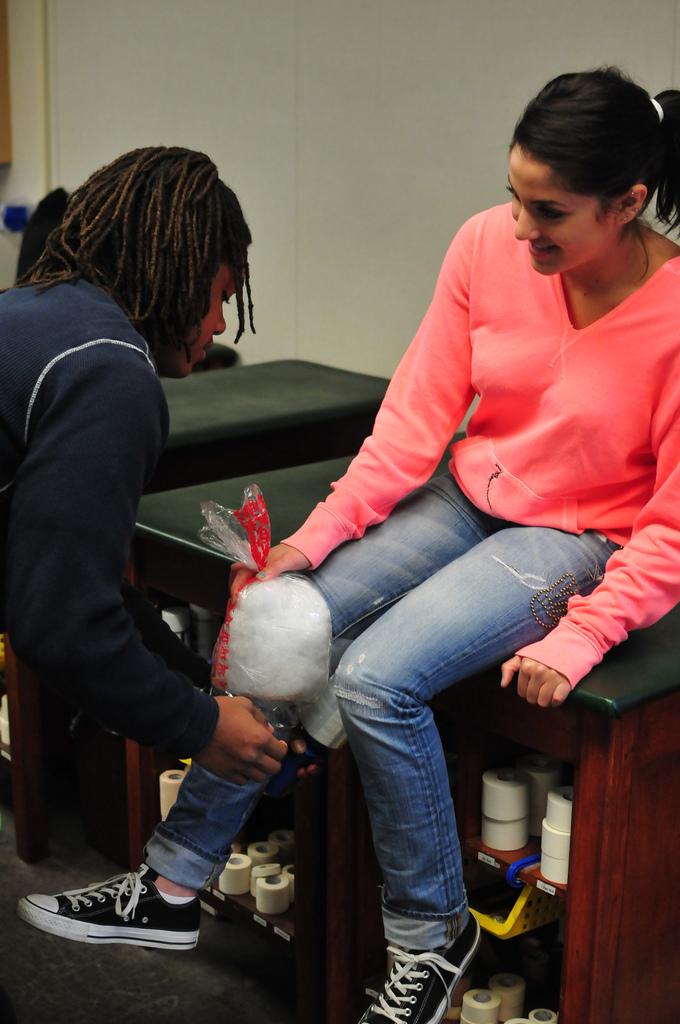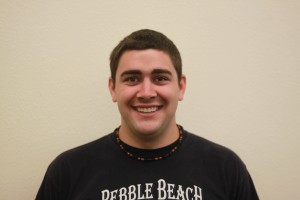Look above head athletic trainer Wendy Weber’s office in the training room. There are stickers from Oklahoma State, University of Utah, UCLA and Michigan State, among others.
Those aren’t her favorite schools and she didn’t attend any of them; her students did.
Those stickers represent DVC’s sports medicine students making their way to the college of their choice, looking for degrees in sports medicine, personal training, coaching and sports management.
DVC’s sports medicine program started out very small and continues to expand. Mike Chisar, sports medicine program director, became the head trainer in 1995 when one sports medicine class was available.
By 2005, Weber took over his training duties because sports medicine classes become so popular.
“In some cases we added 5 or 6 students over the maximum,” Chisar said.
There are currently 17 sports medicine courses, excluding pre-requisite or physical education courses.
Most students in the program are looking to pursue a career in one of the fields.
Some, however, are in it just to find out more about their injuries or to be better prepared in case of an accident.
Tim Beasley and Bryan Gima-Derrow are both students in the program and love it. They both started because they wanted to help people and stay involved in sports, and they turned it into a career path.
In fact, the sports medicine program’s main focus is to get students transferred and to help start their careers.
Some students have had internships with the Raiders and local doctors.
Also, previous students have become physical therapists, nurses, physician assistants, paramedics, ER technicians and even school teachers or trainers.
Four degrees are available at DVC through the program in sports medicine, personal training, coaching, and sports management. Three certificates are available in personal training, coaching, and group training.
All sports medicine students start out in introductory classes. These classes cover basic medical techniques and termwinology. They go over diseases and treatment of basic injuries.
Clinical classes, which cover first aid and rehab techniques, are offered for advanced students who want to go into the sports medicine field.
Students learn how to treat different injuries in lecture courses and then get to apply the processes in the training room.
Weber supervises these advanced students, which is a demanding task as she also cares for around 350 athletes.
Advanced students attend home sporting events and away football games; they are also available for every practice and an hour before and an hour after every event.
Beasley said the worst injury he has seen during a game is “either a dislocated thumb or a dislocated knee.” They aren’t the hardest to treat but they look the worst.
Students looking for a degree in a sports medicine-related of the fields related to sports medicine are at a major advantage. Sports medicine student Skylar Belsher said she wanted to “help people continue doing what they love.”






































































